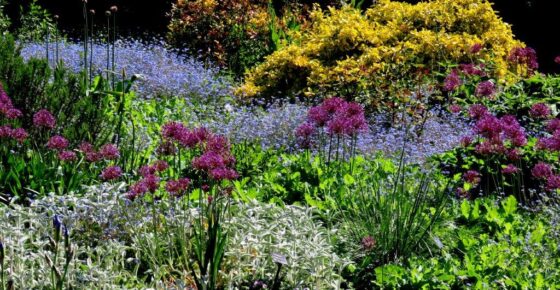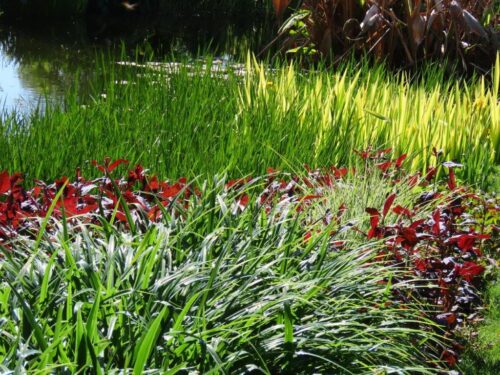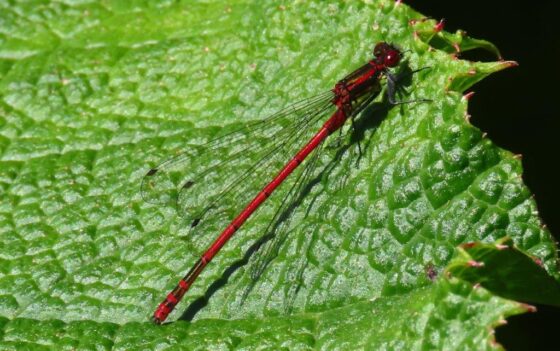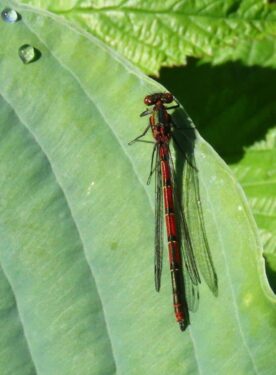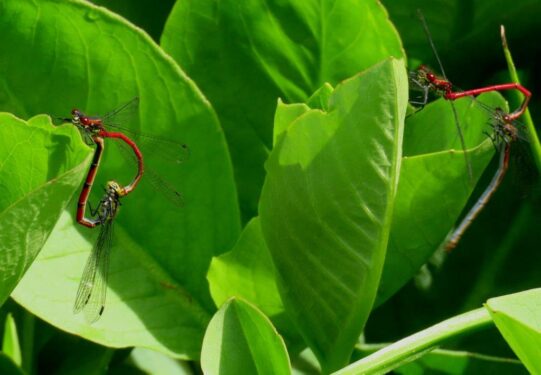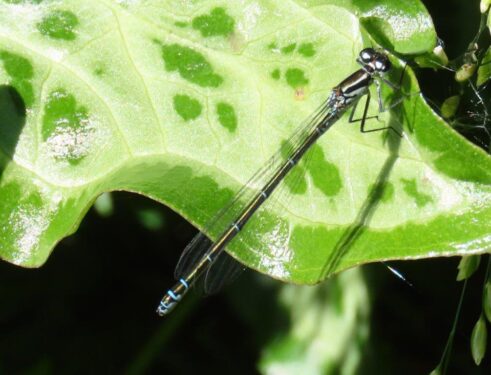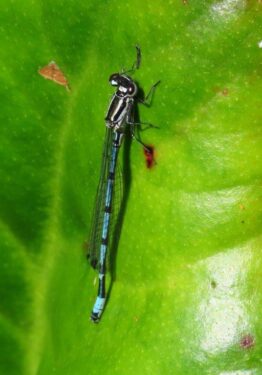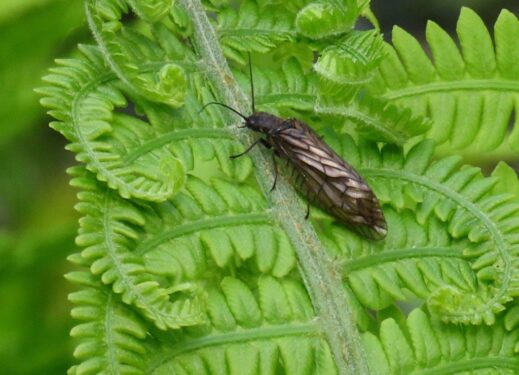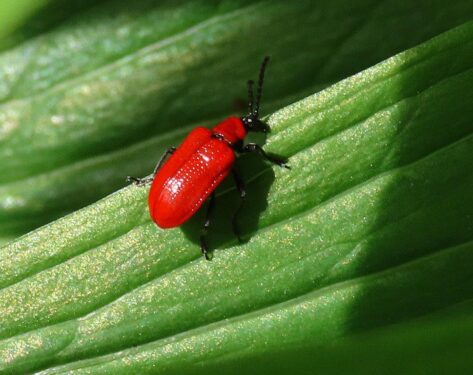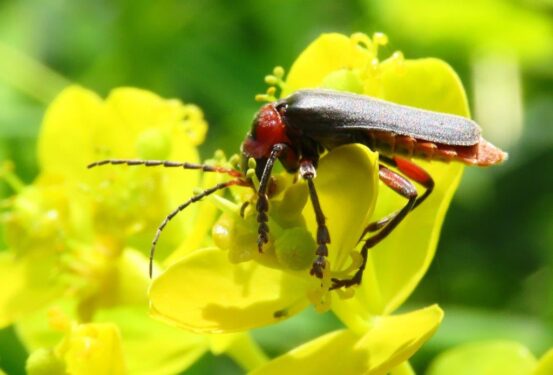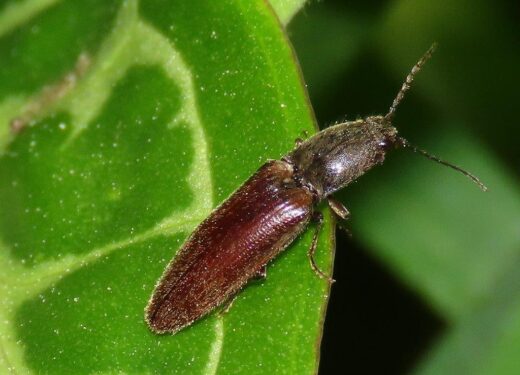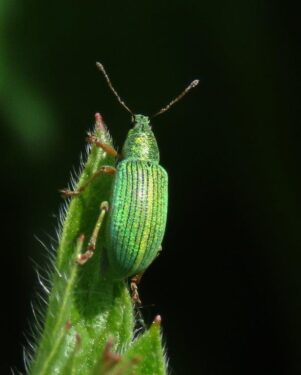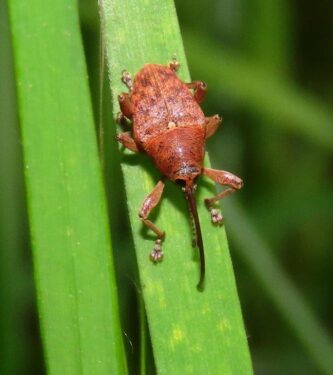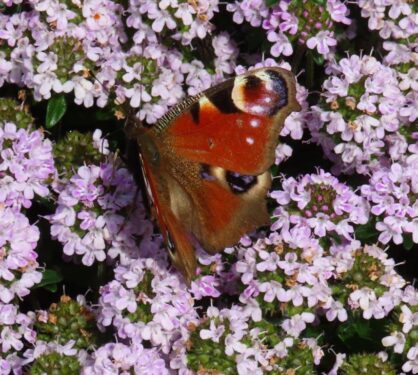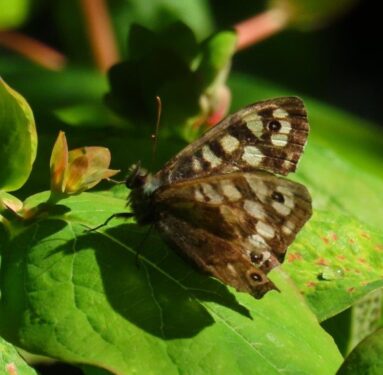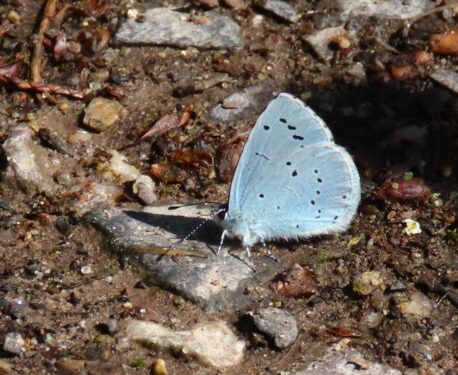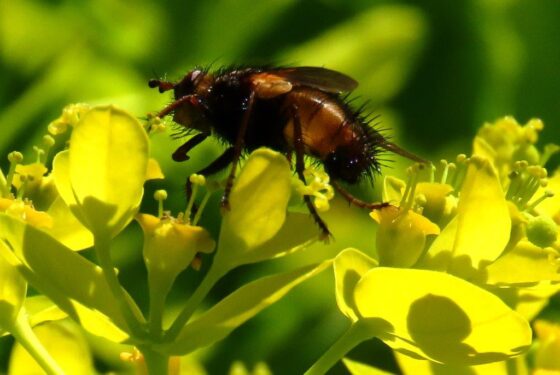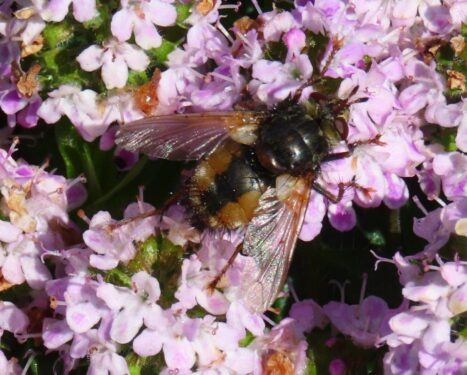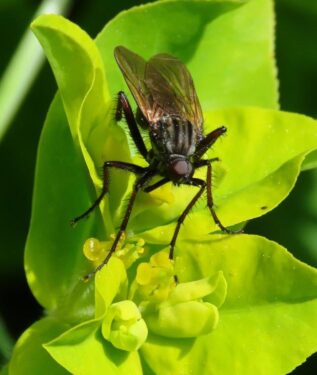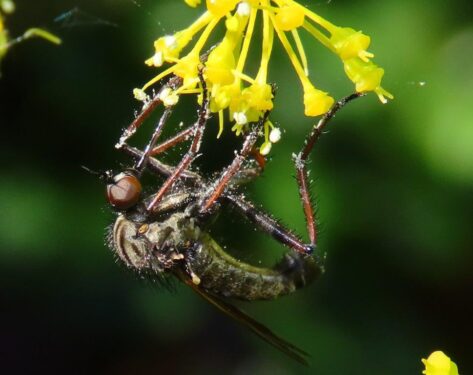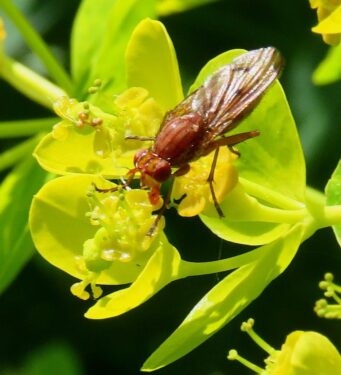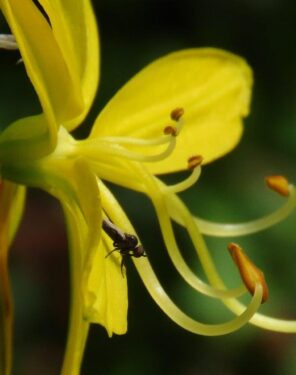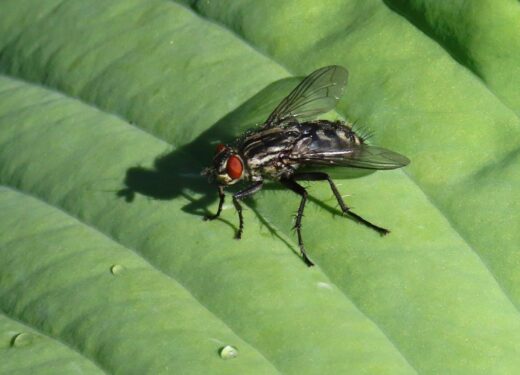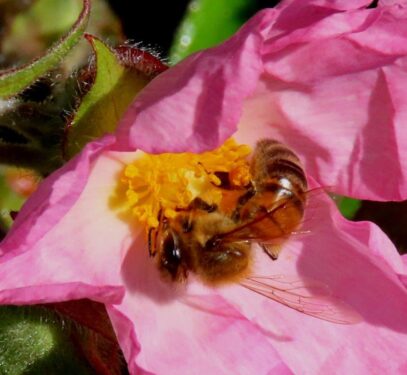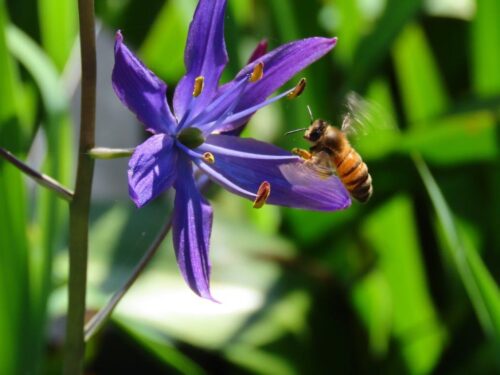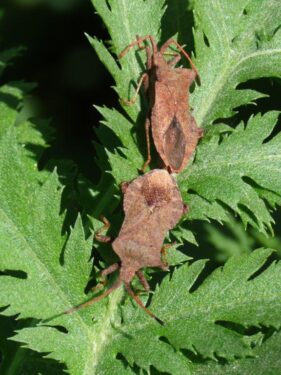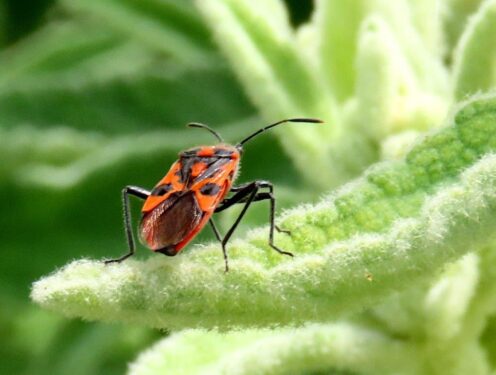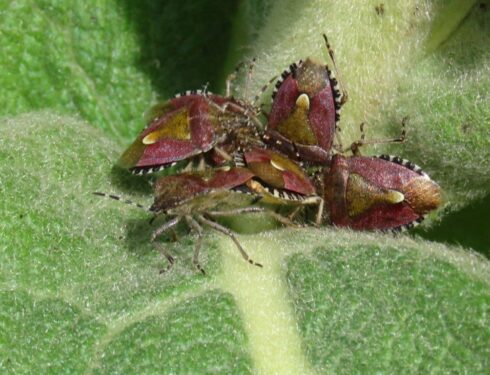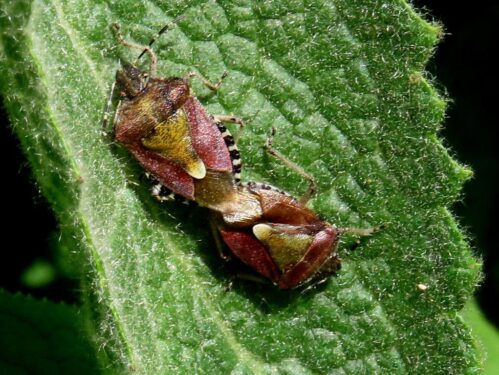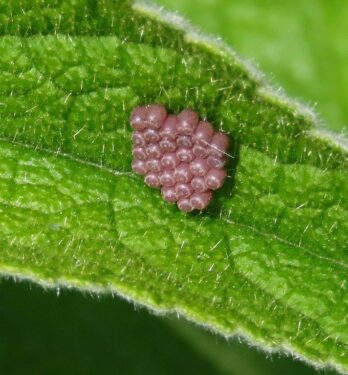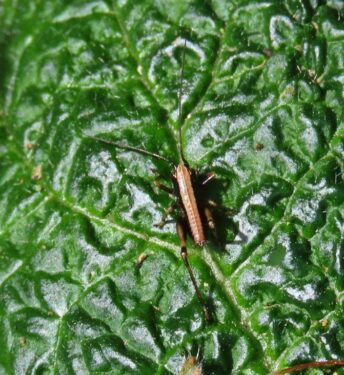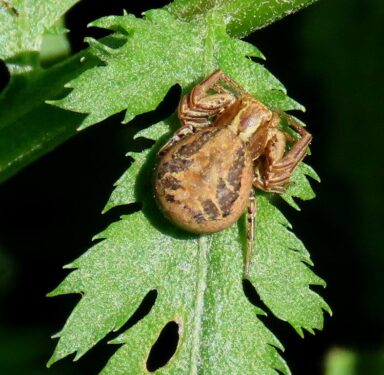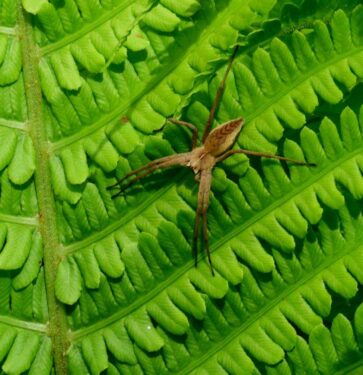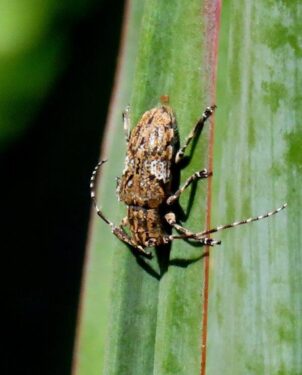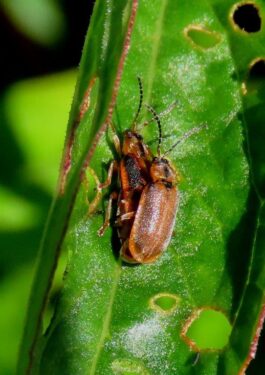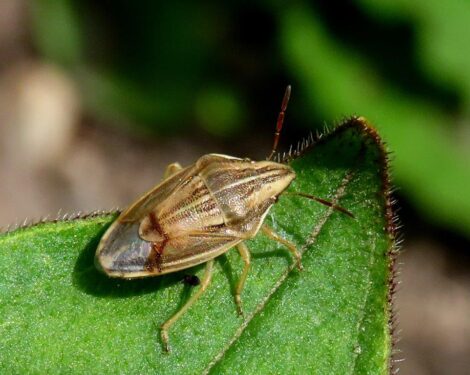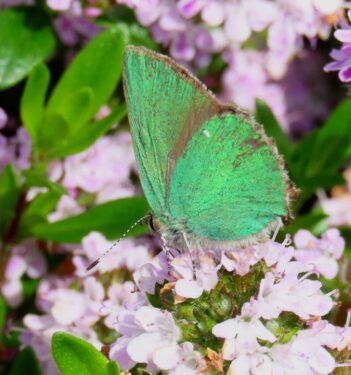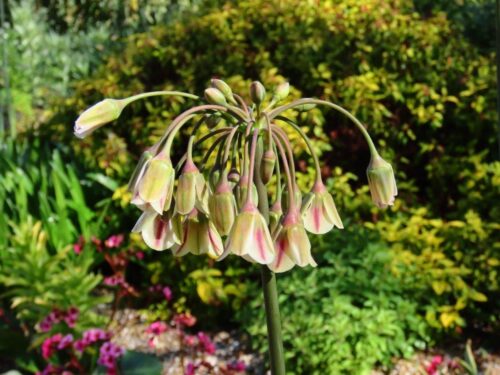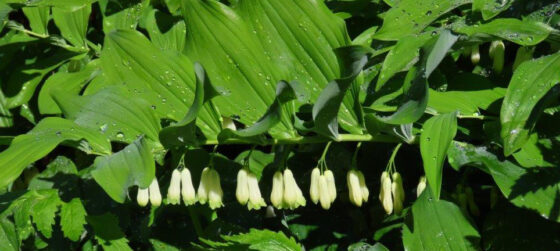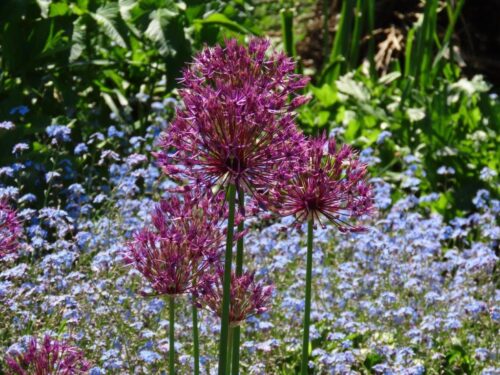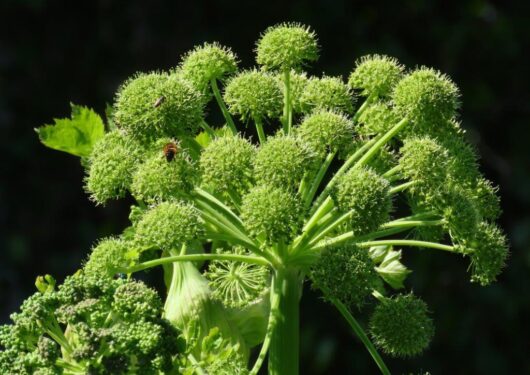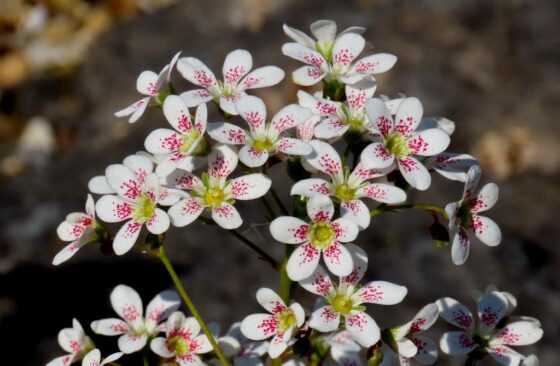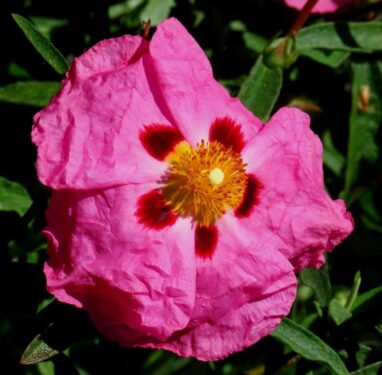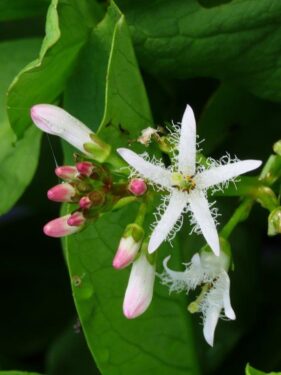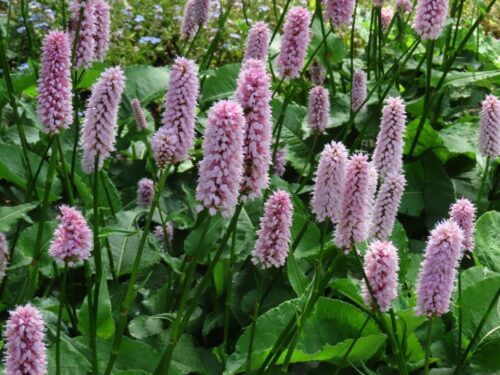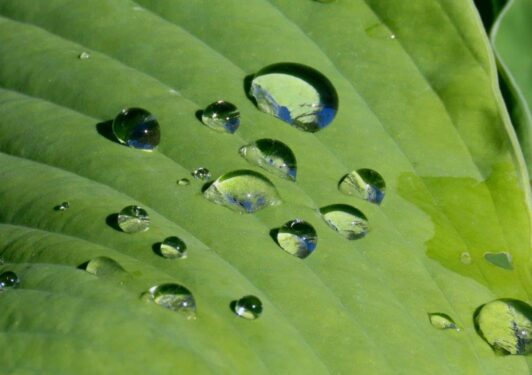May sweeps in, and the focus for wildlife turns to the ponds and water margins. The first damselflies are out, darting everywhere, mating and making more for next year. Large Red and Azure Damselflies, along with Blue-tailed Damselflies (not photographed) are on the wing now, and the first dragonflies will be very soon.
Sharing the aquatic early stages of damselflies but in a completely different order of insects, Alder-flies have emerged in large numbers in the past week.
Lots of beetles are now out and about, from Lily Beetles to soldier beetles, click beetles and weevils…
… and the variety of butterflies is changing: Orange-tips are fading out while Peacocks are still going strong, and the first Speckled Woods and Holly Blues are now flying.
Flies, including parasite-flies, dance-flies and snail-killers are all over the garden, but especially attracted to Euphorbia …
… while bees are often more specialist, seeking the closed tubular flowers that other insects cannot penetrate. Apart from the Honeybees that go for anything that has either nectar or pollen or both…
Plant bugs have also come out in force with the warm weather – here are Dock Bugs, a Cinnamon Bug and orgies of Hairy Shield-bugs, with the results of their endeavours.
The first, tiny Dark Bush-crickets have appeared: amazing to think that after five skin-sheds they will be serenading warm summer evenings in the hedgerows.
And everywhere there is insect abundance, there are always things ready to exploit nature’s largesse: here, a Xysticus crab-spider and a Nursery-web Spider.
Everything shown above is more-or-less widespread and relatively common. But there are the rarities as well: this week has produced the garden’s second record of the White-clouded Longhorn beetle (the first, two years ago, was only the fourth Essex location in that last hundred years) and the Purple-loosestrife was covered in a leaf- beetle Galerucella calmariensis. When we looked up the Essex distribution map for this creature, we find it at only five previous locations, all of which are along the southern or western boundaries of the county.
And while not as scarce as the above two, it was great to find the Bishop’s-mitre (a plant bug that we see rather infrequently) and I was inordinately excited (as the gardeners will testify!) to spot a couple of Green Hairstreaks nectaring on the Thyme, my first of the summer and also my absolute favourite butterfly.
All this, and there are a few flowers to see as well!!
If anyone wants to join me on a nature walk around the gardens, I will be doing just that (weather permitting!) on May 17, June 21, July 19, August 2, August 16 and September 20. Once you have paid to come in, the walk is free! Walks commence at 11AM and 12 noon each day, meeting at the Visitor Information Centre. For garden entrance tickets and more information, visit our website Beth Chatto’s Plants and Gardens, and do come expecting to want to buy some of the wildlife-attracting plants I will show you, as well as delicious tea and cakes!
